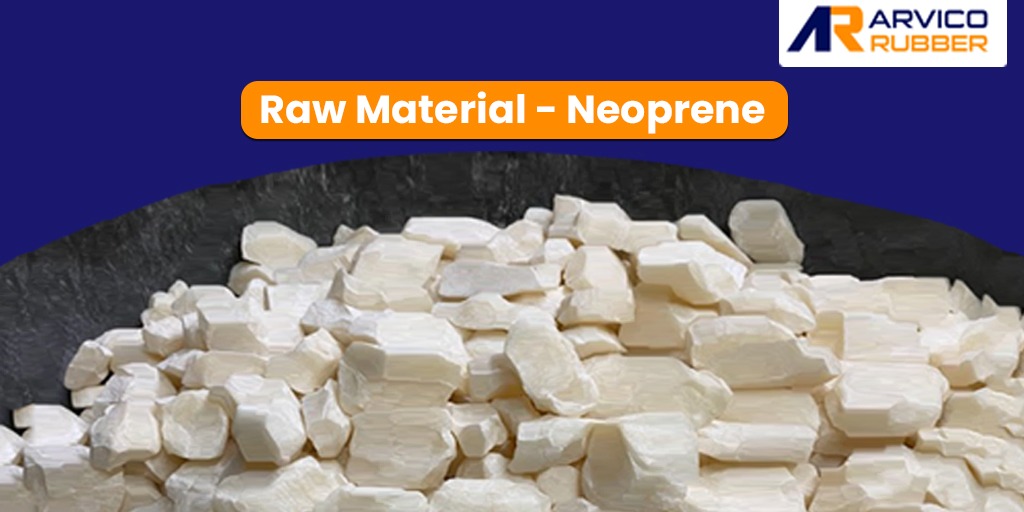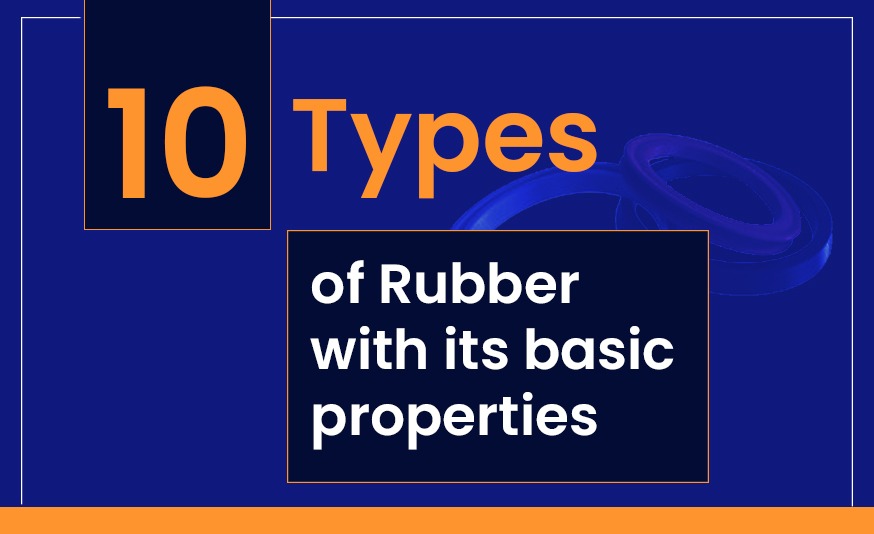Introduction
There are two basic types of rubber – natural and artificial (synthetic). Natural rubber is derived from the latex of the rubber tree and is flexible, moldable, strong, and has a high stretch ratio. All these features have made it one of the most sought-out materials for making all kinds of consumer products. Synthetic rubber is a type of rubber created to imitate natural rubber and is created artificially end-to-end. Synthetic rubber is more affordable, can be produced limitlessly, and can be created with properties to match requirements exactly.
Rubber is used in a variety of industrial applications and is one of the inevitable materials in today’s world. Did you know that different rubber materials are available for different purposes these days? Each of these comes with its own features and advantages, and when you want to design a rubber component, knowing the pros and cons of each type of rubber will definitely help you.
Properties of rubber
While there are so many different properties of rubber, there are three major ones that you should know about.
- Elasticity – Elasticity is the stretch ratio of the material. The molecular structure of rubber makes it easy to stretch them, allows them to come back to their original shape, and makes it possible to mold them into shapes of choice. That’s why in 2020 alone, the world produced 13 million metric tons of natural rubber and 14.3 million metric tons of synthetic rubber for human use.
- Thermal contraction – Thermal contraction is the behavior of rubber to contract or shrink when thermal pressure is applied. Thermal contraction makes the rubber molecules twisted and tangled, and this causes their shape disintegration. Thermal contraction is an important property that helps mold rubber into different shapes, and this also depends on the type of rubber you choose.
- Durability – This is one property that experts love about rubber. Rubber has a relatively slow heat-buildup rate and is also extremely resilient to oxidizing agents, UV radiation, water, environmental agents, corrosion, and other factors that can damage the material. Also, when it comes to synthetic rubber, the durability can be improved drastically by mixing the right materials together.
Ten Common Types of Rubber
There are ten common types of rubbers, and they all come with their own distinct properties. Out of these, only one is produced naturally, from the latex of certain plants. Others are all synthetically produced in manufacturing facilities.
Natural Rubber – This is the only type of rubber obtained from natural sources. Natural rubber is derived naturally from the bark of the Hevea brasiliensis tree. Incisions are made on the barks of the tree and a sticky, white milky fluid called latex is drawn. This process is called tapping and the latex is further processed to create natural rubber. Industrialization led to excessive demand for rubber and this was the basis for the creation of synthetic rubber during the early 1900s.
Did you know that natural rubber is a raw material used in the production of more than thousands of products, including surgical gloves, aircraft and automobile parts, and even clothes? While there are about 25,000 types of plants that produce latex, rubber can be extracted from only 2000 of these species.
Styrene-Butadiene Rubber – Styrene-butadiene rubber (SBR) is widely used in the production of tires and other automotive parts. Because of its high tensile strength and resilience, it is also used in the production of moving mechanical parts. This type of rubber is one of the most commonly produced types of synthetic rubber on the market right now.
Silicone Rubber – Silicone rubber is a relatively new entrant that has become an extremely preferred choice in the last few decades. Silicone is known for its malleability and biocompatibility. Biocompatibility is being non-toxic and insoluble in body fluids. It is also extremely resilient to UV, ozone, fire, and other environmental damages. This type of rubber is one of the common choices of materials used to create products in the food and beverage, healthcare, and electronics industries.
EPDM Rubber – Ethylene Propylene Diene Monomer rubber comes with many great properties like low conductivity, ozone, UV, weathering resistance, and age resistance. Because of this, the material can be used outdoors in products like roofs, sealants, hoses, and seals. EPDM rubber is also used in manufacturing certain automotive parts.
Neoprene Rubber – Another very popular type of rubber is neoprene. Did you know that it is one of the oldest synthetic rubbers on the market right now? It handles corrosion, degradation, and flames very well and hence is used in the production of high-pressure accessories like gaskets, belts, and seals.

Butyl Rubber – Isobutylene isoprene rubber or butyl rubber is chosen for its extremely high gas impermeability feature. Gas impermeability is the ability of the rubber to stay unaffected by most kinds of gases. This is why this type of rubber is a great material to use as a sealant in vacuum applications.
Nitrile Rubber – Nitrile Butadiene Rubber, or simply nitrile rubber, is derived from acrylonitrile and butadiene. It is resistant to most oils, fuels, and chemicals, and this makes it a great choice to be used in the aeronautical and automotive industries. Thanks to its high moldability, it is also used in making footwear, floor mats, sponges, and rubber foams.
Hydrogenated Nitrile (HNBR) – HNBR is better than nitrile in a way that it is more chemical and oil resistant. It can also handle higher temperature extremes than regular nitrile rubber. This type of rubber finds extensive usage in the automotive industry.
Hypalon Rubber – Hypalon rubber is a type of chlorosulfonated polyethylene (CSPE) rubber that was originally created by DuPont Performance Elastomers. The formula of the rubber was slightly changed over time, and it is largely used in the marine industry.
Viton Rubber – Viton is not a generic rubber type. It is a trademarked product of DuPont and is a fluoropolymer elastomer. This type of rubber was first introduced under the brand name Viton, and hence, right now, the brand name has become more or less a generic usage of any rubber made of fluoropolymers. Viton is chemical and oil resistant and can withstand high temperatures. It is the best choice to use when handling oxygenated automotive fuels. Viton is most commonly used in making O-Rings, seals, and gaskets.
Conclusion
Picking the right type of rubber and good quality of rubber is the most vital step in creating products of your choice, in the specifications you need. It would always help to talk to an expert to understand what rubber choices would suit you. Get in touch with Arvico Rubber experts for any questions you may have about natural and synthetic rubbers and their types and usage.


